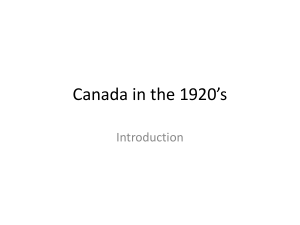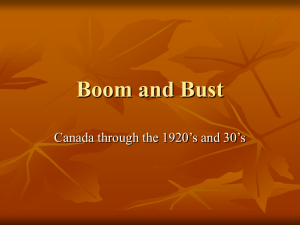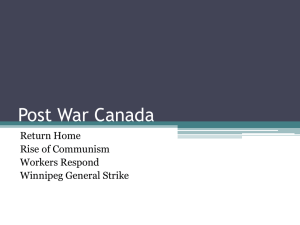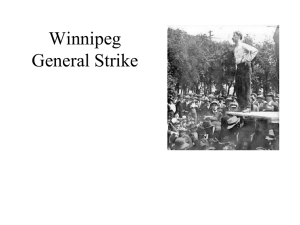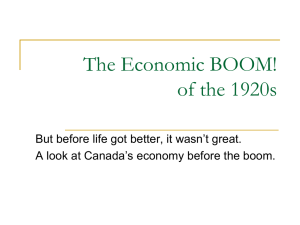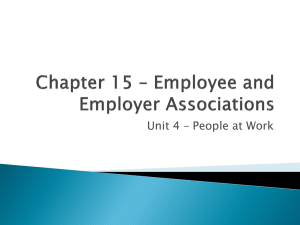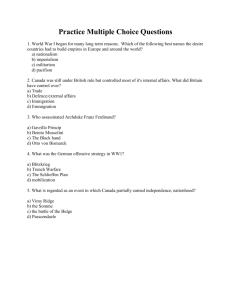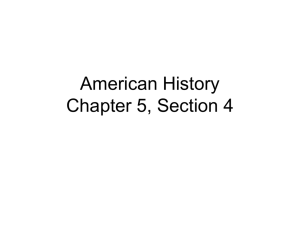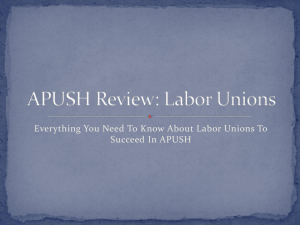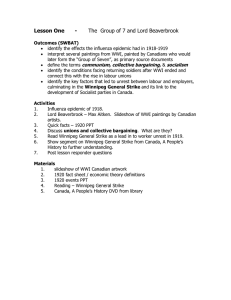The Winnipeg General Strike
advertisement
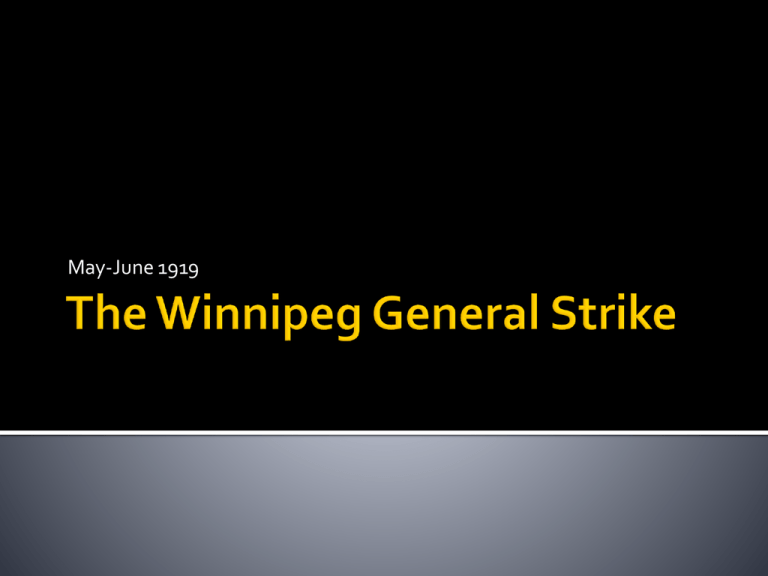
May-June 1919 After the end of WWI, workers in Canada faced a number of challenges: Spanish Flu No jobs No employment insurance Low wages Those with jobs wanted unions to fight for: Higher wages Better working conditions Job security A main conflict between workers and employers was over the right of unions to collectively bargain. Collective bargaining: the ability of unions to communicate directly with employers on behalf of workers. The conflict between workers and employers reached a peak during the Winnipeg General Strike of 1919. On May 1, 1919, building and metalworkers strike in Winnipeg. They were asking for three things: Decent wages The right to bargain collectively Eight hour work-days Soon after, 30,000 other workers in Winnipeg went on sympathy strikes. Sympathy strikes were also called in Brandon, Saskatoon, Prince Albert, Regina, Calgary, Edmonton, Vancouver, New Westminster, Victoria, and in as many as 20 other towns. The Canadian government was alarmed and very fearful of a communist revolution, after the recent events in Russia. Winnipeg employers, manufacturers, lawyers, bankers, and politicians responded by forming the Citizen’s Committee of 1,000. This Committee mounted a campaign to discredit the strikers as Bolsheviks and "alien scum," declaring the strike a revolutionary conspiracy. Fearing the encroachment of Communism in Canada, governments went on high alert. The Winnipeg General Strike came to a head on Bloody Saturday, June 21, 1919, when a large crowd gathered in downtown Winnipeg to protest the arrest of their strike leaders as well as the deadlock in negotiations. A streetcar was attacked; its windows were smashed, and it was turned over and set on fire. Mayor Grey called on the North West Mounted Police to disperse the crowds. Mounties, on horseback, waded into the crowd, swinging their sticks. A Ukrainian immigrant named Mike Sokolowski was shot and killed and another striker later died in hospital of his wounds. At least 30 others were injured. More than eighty rioters were arrested. The Central Strike Committee ordered the workers back to work. Initially it looked as though the strikers had achieved nothing. However … The strike was successful in drawing attention to the social and economic problems that many people faced. People were upset and began looking at politics as a future means of resolution and change. Workers became conscious of themselves as a class; unions would become a powerful force in Canada.
